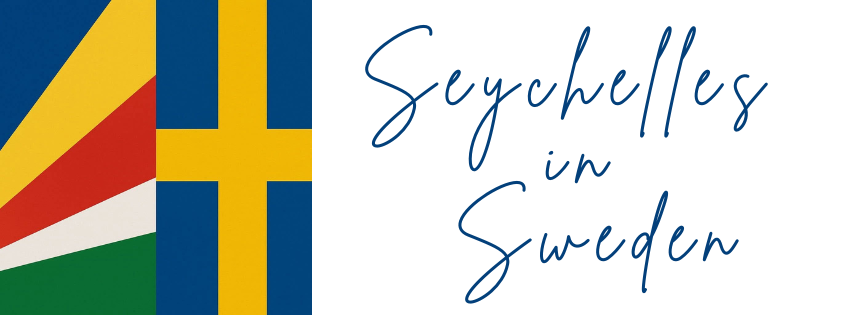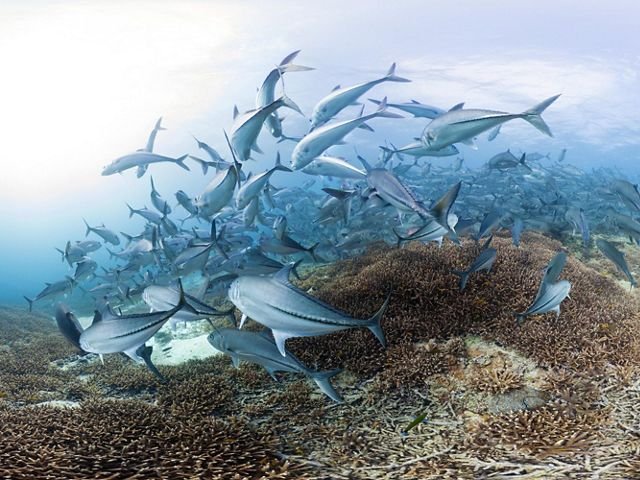The ocean defines Seychelles. It feeds families, drives exports, attracts tourists, and anchors the nation’s identity as a proud maritime state. Yet as climate pressures, overfishing, and global competition grow, Seychelles must innovate to stay resilient. Sweden, a leader in sustainable fisheries management and marine research, offers powerful partnership potential, not just in technology and science, but in creating shared models for a truly sustainable blue economy.
This blog explores how Seychelles and Sweden can collaborate in fisheries research, aquaculture, and value-added fish processing, turning shared Nordic–Indian Ocean knowledge into tangible economic and environmental gains.
1. The Blue Economy Vision for Seychelles
Seychelles has positioned itself as a global advocate for the Blue Economy, integrating ocean conservation with economic growth. The Blue Economy Strategic Policy Framework and Roadmap 2018–2030, developed with the World Bank and UNDP, identifies fisheries, aquaculture, marine biotechnology, and maritime transport as pillars for sustainable prosperity.
But policy alone isn’t enough. The next step is connecting these ambitions with technical know-how and financial partnerships, and this is where Sweden, through its universities, innovation agencies, and development experience, can play a defining role.
2. Sweden’s Strength in Marine Research and Technology
Sweden is home to some of Europe’s top ocean science and technology institutions. The Swedish University of Agricultural Sciences (SLU Aqua), University of Gothenburg’s Department of Marine Sciences, and RISE Research Institutes of Sweden are globally respected for their work on:
Stock assessment modeling and fisheries management (Baltic Sea case studies).
Cold-water and recirculating aquaculture systems (RAS) for fish farming in low-impact, closed environments.
Marine biotechnology and food innovation, including sustainable feed and processing technologies.
Policy frameworks for community-led fisheries governance, promoting ecosystem-based management and stakeholder participation.
These strengths align with Seychelles’ own goals of diversifying beyond traditional tuna exports into aquaculture, research-driven fisheries management, and value-added processing.
3. Joint Fisheries Research and Knowledge Exchange
Seychelles’ Ministry of Fisheries and Blue Economy (MFBE) and the Seychelles Fishing Authority (SFA) already collaborate with regional and global bodies such as the Indian Ocean Tuna Commission (IOTC) and FAO’s Southwest Indian Ocean Fisheries Commission (SWIOFC). However, the integration of European academic and technical partners remains limited, and Sweden could help bridge that gap.
Potential research collaborations include:
Climate resilience and tuna migration patterns: Swedish expertise in marine data modeling could help refine Seychelles’ stock management, adapting fishing seasons to ocean temperature changes.
Bycatch reduction and selective gear design: Joint innovation programs could test Swedish-engineered selective nets and hooks to protect vulnerable species.
Fisheries traceability and digital monitoring: Sweden’s success in electronic catch documentation can guide Seychelles in building robust traceability systems that meet EU and Nordic market standards.
Joint ocean observation projects: Integrating data from Swedish satellites and Seychelles’ EEZ monitoring can strengthen maritime domain awareness and environmental forecasting.
Such cooperation can be initiated through an MoU between SLU Aqua and SFA, supported by the Swedish International Development Cooperation Agency (Sida) and the Swedish Institute’s Partner-driven Cooperation (PDC) grants.
4. Building a Sustainable Aquaculture Sector
Seychelles’ aquaculture development has been steadily advancing under the National Aquaculture Policy and Strategy 2023–2030, focusing on high-value species like sea cucumbers, groupers, red snapper, and ornamental fish. But challenges remain, including access to sustainable feed, disease control, and technical capacity.
Here, Swedish expertise in recirculating aquaculture systems (RAS) and feed innovation can be transformative.
Practical opportunities include:
Pilot RAS farms in Seychelles: Using Swedish designs for low-water, energy-efficient systems adapted to tropical conditions.
Collaborative feed development: Partnering with RISE and SLU to use Seychelles’ fish waste and algae biomass as local feed ingredients, reducing dependence on imported feed.
Training and certification: Exchange programs for Seychellois technicians and students to train in Swedish aquaculture institutes, with reciprocal internships in Seychelles’ pilot farms.
Ornamental and eco-tourism aquaculture: Developing small-scale coral, seahorse, and ornamental fish farms for export and education tourism, modeled after Swedish “blue visitor centres.”
Such programs would not only create jobs and diversify exports but also reinforce Seychelles’ brand as a sustainable island economy grounded in science and innovation.
5. Value-Added Fish Processing and Trade Potential
Currently, Seychelles exports mainly frozen and canned tuna, with limited domestic value addition. Sweden’s food technology sector could help modernize Seychelles’ fish processing and branding to capture higher market value.
Key areas for partnership include:
Cold chain optimization: Swedish cold logistics companies can assist with solar-powered refrigeration and packaging innovations that reduce post-harvest loss.
Eco-labeling and sustainability certification: Aligning Seychelles seafood with Nordic eco-labels such as KRAV or MSC (Marine Stewardship Council) to meet growing consumer demand for traceable, ethical products.
Product diversification: Introducing smoked, marinated, and ready-to-eat tuna and snapper products designed for Scandinavian markets.
Packaging and branding collaboration: Swedish design agencies could co-brand Seychelles seafood with storytelling that connects consumers to the Indian Ocean’s sustainability mission.
The EU-Seychelles Sustainable Fisheries Partnership Agreement (SFPA), renewed in 2020, already provides the legal foundation for EU market access. Adding Swedish processing and innovation expertise would make Seychelles not just an exporter of raw fish, but a producer of premium, sustainable ocean foods.
6. Policy, Funding, and Investment Frameworks
For these partnerships to thrive, a clear institutional platform is essential. A Seychelles–Sweden Blue Economy Taskforce could coordinate research, funding, and private-sector engagement.
Potential funding and technical sources include:
Sida (Swedish International Development Cooperation Agency): Blue economy and climate resilience funding.
FAO Blue Growth Initiative: Capacity building and aquaculture investment.
Nordic Development Fund (NDF): Climate adaptation projects with ocean focus.
EU Horizon Europe and Erasmus+ : Joint marine research and education grants.
Public–private partnerships (PPP) between Seychelles processors and Swedish seafood innovation firms.
Such partnerships could also attract impact investors from Sweden’s growing “blue finance” sector, eager to support projects that deliver measurable ocean health and livelihood benefits.
7. Maritime Education and Youth Engagement
Seychelles’ young people must see the ocean not just as a workplace, but as a field of innovation. Sweden’s vocational schools and universities could support new exchange programs in marine science, aquaculture, and ocean technology, co-funded through Erasmus+.
A Seychelles–Sweden Marine Innovation Scholarship could annually sponsor Seychellois students for MSc programs in Gothenburg or Uppsala, while Swedish students could spend a semester in Seychelles for field research. Such people-to-people ties are the long-term foundation of genuine partnership.
8. The Path Forward
Sweden and Seychelles share a deep respect for the environment and a strong tradition of international cooperation. By linking Sweden’s research and innovation capacity with Seychelles’ strategic ocean position, the two nations can create a new model of North–South blue economy partnership, built not on aid, but on shared innovation, mutual learning, and circular value creation.
A structured roadmap might include:
Signing an MoU between Seychelles Ministry of Fisheries & Blue Economy and Swedish University of Agricultural Sciences.
Launching a joint blue economy innovation program, co-funded by Sida and the Seychelles Conservation and Climate Adaptation Trust (SeyCCAT).
Establishing an annual Seychelles–Sweden Blue Economy Forum rotating between Victoria and Stockholm.
Supporting pilot projects in aquaculture, circular fish processing, and maritime education.
9. Conclusion
The partnership potential between Seychelles and Sweden in the blue economy is vast. From cutting-edge aquaculture to sustainable fish processing and youth education, both countries have what the other needs. Seychelles offers biodiversity, location, and ambition; Sweden brings technology, research, and experience.
By joining forces, they can create a new chapter of blue diplomacy, one where clean oceans, sustainable livelihoods, and innovation coexist for the benefit of both nations.

